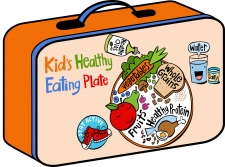Vegetarians Unite! U.S. Burger Brand Under Pressure to Add Veggie Option
Author: admin /How bad do you want a veggie burger? Just ask the over 20,000 people in the United States who have signed a change.org petition demanding (not even requesting) that In-N-Out add a vegetarian burger option to its menu.
Sounds simple, right? Give customers what they want and they’ll be happy. But the truth is, you can’t please everybody and sometimes you shouldn’t even try. This is the case with In-N-Out. You see, the chain’s menu is famous for its bare-bones approach: Burgers, cheeseburgers, fries and shakes. If you’re thirsty, go ahead and order a soda.
Sometimes, certain marketing promotions pay off big-time for QSR and fast-casual restaurant operators. This kind of success can make it tempting to re-use those same promotions or marketing tactics. But there comes a point where this strategy may backfire - in a big way.
Take Burger King, for example. With same-store sales slumping (down 0.5%) across the USA and Canada leadership at the brand need only look to one place in particular:
Cheetos Chicken Fries.
While the predecessors to the Cheetos Chicken Fries (Chicken Fries and Mac ‘n Cheetos) made a relatively decent splash in the market, the latest iteration of the fries fell flat. Very flat, in fact.
With many of us trying to do the right thing, choosing healthier food, when we eat it’s no wonder so many restaurants are making a shift to healthier menu ingredients.
Recently, Papa John’s (the global pizza brand) made good on its promise to eliminate a number of chemicals and ingredients from its menu items and ingredients list. The list of ingredients that the brand removed includes:
- Synthetic Beta Carotene
- Caramel Color
For many people, coffee is life. And for the true coffee aficionados out there it can be difficult to get a quality cup of coffee in the average QSR or fast-casual restaurant. The truth is, coffee just isn't a big part of the profit mix for most restaurants. Because of this, they simply don’t invest in the products or the equipment to support quality coffee.
Take a look at the menu of your favorite restaurant. Chances are, they don’t have much more than “coffee” listed. No mention of brand, percolation method,
It’s safe to say that restaurants have been around far longer than TV commercials to promote them. But TV has played a major role in the success of many restaurants. Big, international chains as well as smaller local brands know the importance of exposure and are turning to TV (and now YouTube and other media channels) to promote their brands with the goal of increased revenue.
Setting all the extraneous internal marketing aside, we’re going to focus this post on the part where a restaurant brand (or its marketing agency) reaches out to production companies with a brief in order to get proposals.













